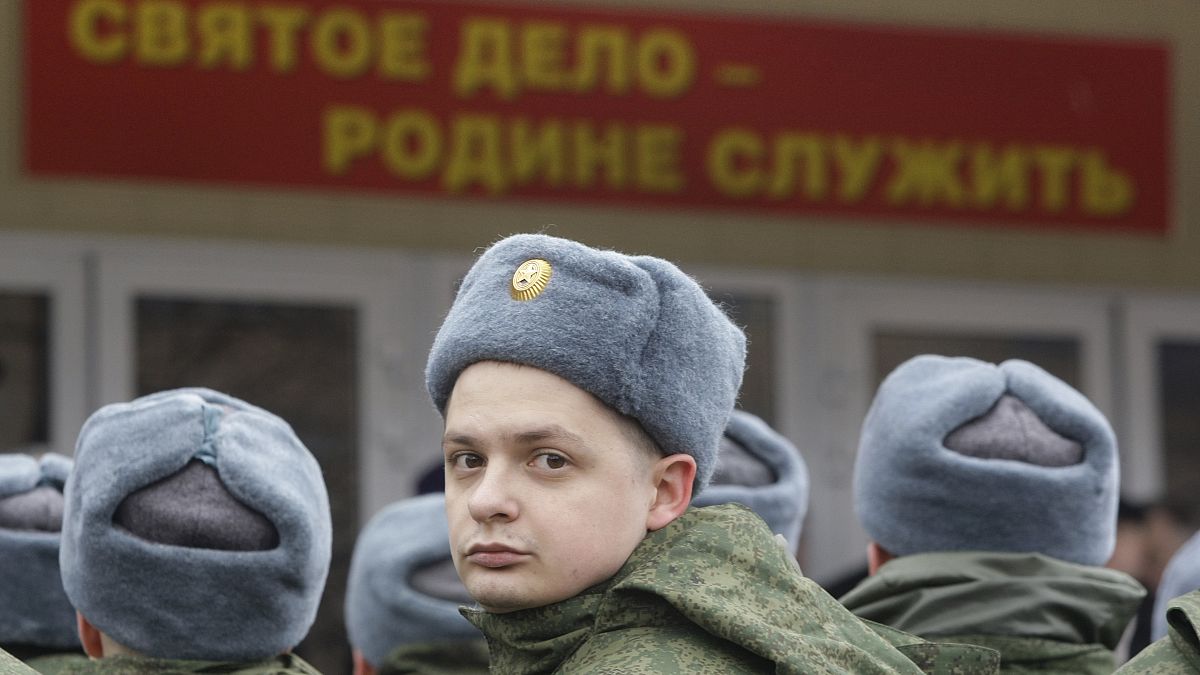Russia has initiated its autumn conscription campaign to call up approximately 133,000 individuals for military service, despite the fact that conscription cannot legally deploy troops to fight outside of Russia. This campaign, which runs until December 31st, is the second routine conscription since the maximum age was raised to 30. New conscripts undergo training before being assigned to their units. Many conscripts end up in Ukraine after being forced to sign contracts with the Russian military to avoid conscription. Even without a contract, conscripts can be sent to illegal annexed territories in Crimea or regions of Russia which are not safer than Ukrainian territories currently involved in fighting.
The Russian NGO “Get Lost” supports individuals trying to evade conscription, as many are forced to sign contracts with the military. Conscripts are often convinced to sign contracts by false promises of safety and financial benefits. Conscripts can also end up in Ukraine due to the falsification of documents by recruiters, signing contracts on their behalf without their knowledge. Russian Defense Minister Andrey Belousov has mentioned that the Ministry of Defense is focusing on getting soldiers to sign military contracts rather than considering a general mobilization.
In Ukraine, there is also forced mobilization, with Russia including residents of occupied Ukrainian territories in their conscription campaigns. Recently, when Ukraine launched an incursion into the Kursk region, hundreds of Russian conscripts were captured. These prisoners were later exchanged for Ukrainian soldiers held by Russia, highlighting the value of these young Russian soldiers to Moscow. Despite previous partial mobilizations, Russian President Vladimir Putin has not declared another one, even as the need for manpower for military operations in Ukraine and defensive efforts in border regions is under question.
Russian officials have stated that the Ministry of Defense is recruiting individuals at a rate of 1,000 to 1,600 daily, indicating a continuous need to replenish frontline forces. The Russian government has announced plans to spend €165 billion on national security and defense, with a significant portion allocated to creating a mobilization reserve within the armed forces. Additionally, funds will be provided to support Russian veterans and their families. Despite the costs associated with military operations, Russia continues to rely on various forces to sustain offensive operations in Ukraine.
As the autumn conscription campaign in Russia commences, concerns arise regarding the deployment of conscripts to fight in Ukraine, which is not sanctioned under Russian law. Many conscripts are manipulated into signing contracts with the military, leading them to end up in unsafe territories of Ukraine. The mobilization efforts in both Russia and Ukraine represent an ongoing conflict in the region, with the need for manpower and resources being a significant focus for both nations. It remains to be seen how these conscription efforts will impact the ongoing military operations and geopolitical dynamics in the region.











